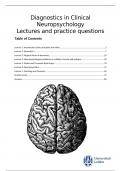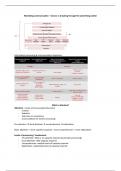Summary
Summary Diagnostics in Clinical Neuropsychology Lectures (+ practice questions)
- Course
- Institution
Hi all! I made a summary of all the lectures, including loads of pictures and 105 multiple choice practice questions. Good luck studying and with the exam! :)
[Show more]




